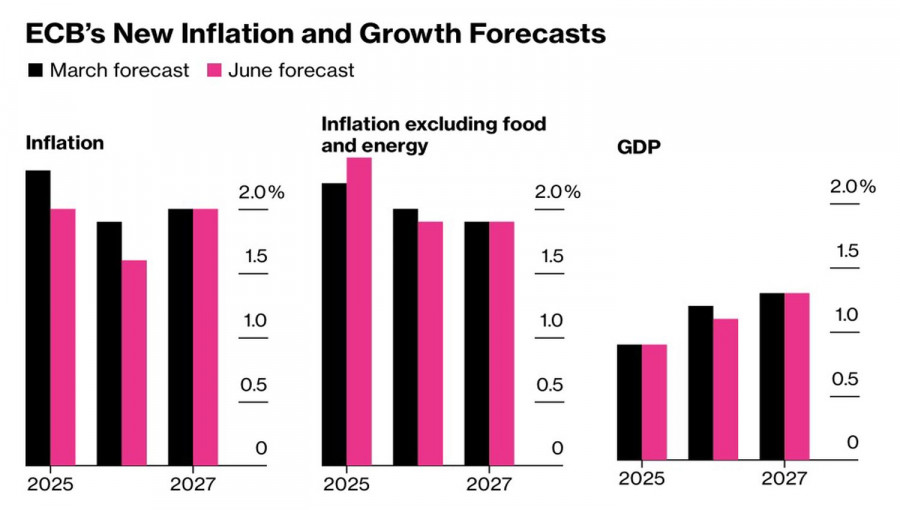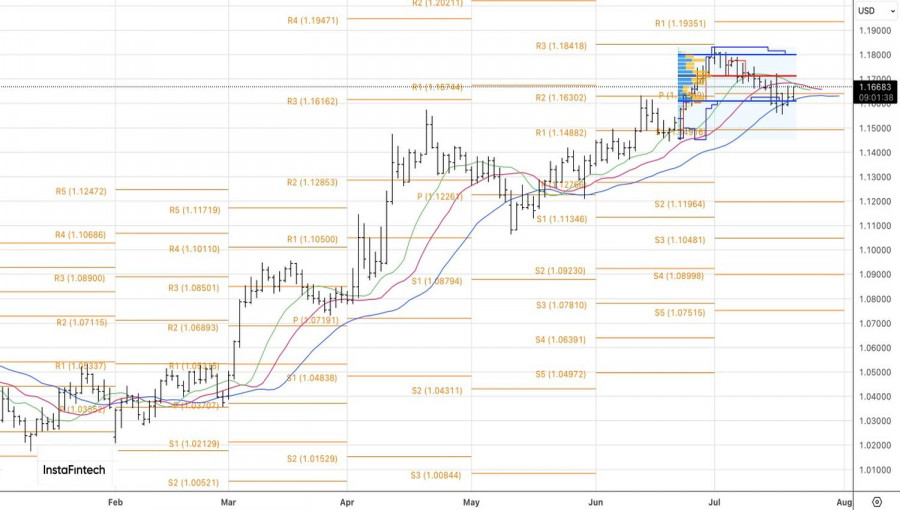Vea también


 22.07.2025 12:42 AM
22.07.2025 12:42 AMAppetite comes with eating. Initially, Donald Trump wanted to impose a 10% universal tariff on Europe; now he has raised the stakes to 15%. Starting August 1, it will rise to 30%, so Brussels needs to act fast to sign an agreement. Otherwise, a trade war with escalating import tariffs on both sides looms. We've seen this before — in 2018–2019 during the U.S.–China conflict. That ended poorly for the yuan. Is EUR/USD facing the same fate?
Forewarned is forearmed. The European Union had time to prepare for negotiations under pressure. Bloomberg experts rightly consider the White House's protectionist policies to be the most significant risk for the eurozone economy. According to Brussels estimates, current U.S. tariffs already affect €380 billion worth of European exports — 70% of total exports to the United States.
Naturally, under such conditions, the EU must have both a Plan A and a Plan B. The first involves negotiations with Washington, the second entails use of the anti-coercion instrument. This could include higher taxes on U.S. tech giants, reduced access to European markets, and bans on investments in the U.S. France and half a dozen other countries support this option. However, reaching consensus within the 27-member bloc will not be easy.
Plans are well and good, but preparing for a trade war doesn't stop there. During the 90-day grace period following U.S. Independence Day, European companies rushed to front-load American imports — shipping goods to the U.S. that were about to be subject to tariffs. As a result, both exports and eurozone GDP accelerated, which had a positive impact on EUR/USD.
The ECB also did its homework. It has lowered the deposit rate eight times to 2% during the current cycle in an effort to keep the struggling economy afloat. In its latest forecasts, the European Central Bank signaled gradual GDP acceleration in 2026–2027 and a mixed inflation trajectory. For now, everything is going according to plan, and Christine Lagarde and her colleagues have no reason to make any changes. In July, borrowing costs will most likely remain unchanged.
The question is whether the Frenchwoman will signal the future path of interest rates. Markets are eagerly awaiting such guidance. However, under increased trade uncertainty, saying less might be wiser. There is always a risk of saying the wrong thing. After all, speech is silver, but silence is golden.
Technically, on the daily EUR/USD chart, bulls continue their attempts to break through to fair value at 1.1715. A successful breakout would increase the likelihood of a renewed uptrend. Long positions initiated from 1.1640 on the major currency pair should be held and gradually expanded.
You have already liked this post today
*El análisis de mercado publicado aquí tiene la finalidad de incrementar su conocimiento, más no darle instrucciones para realizar una operación.



